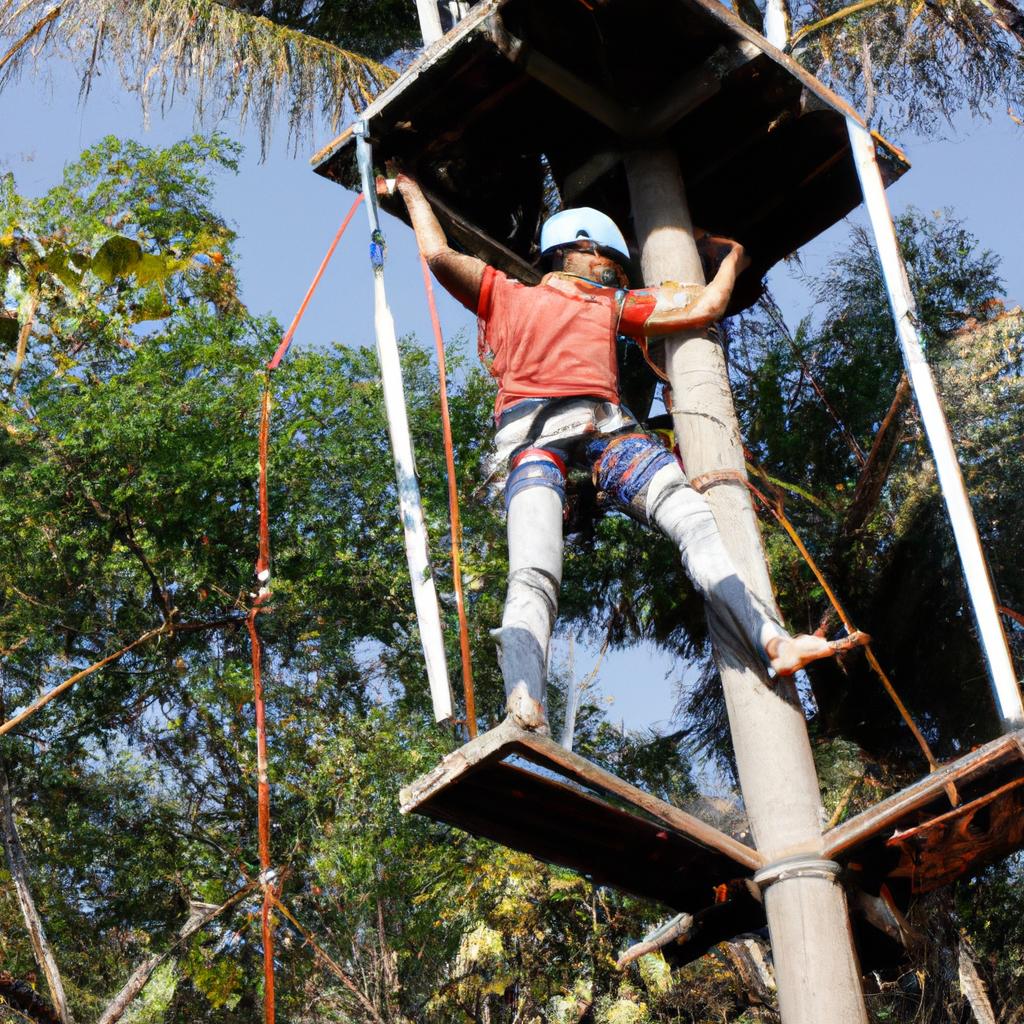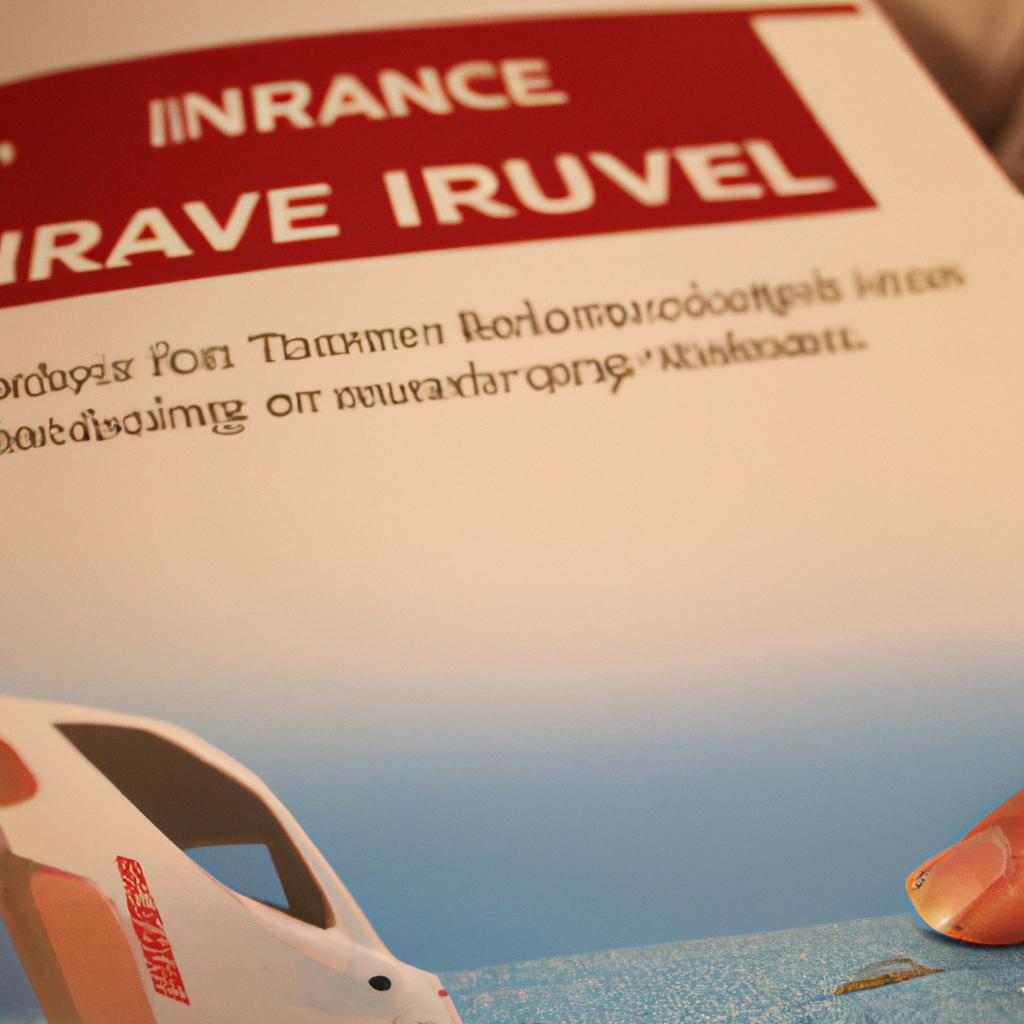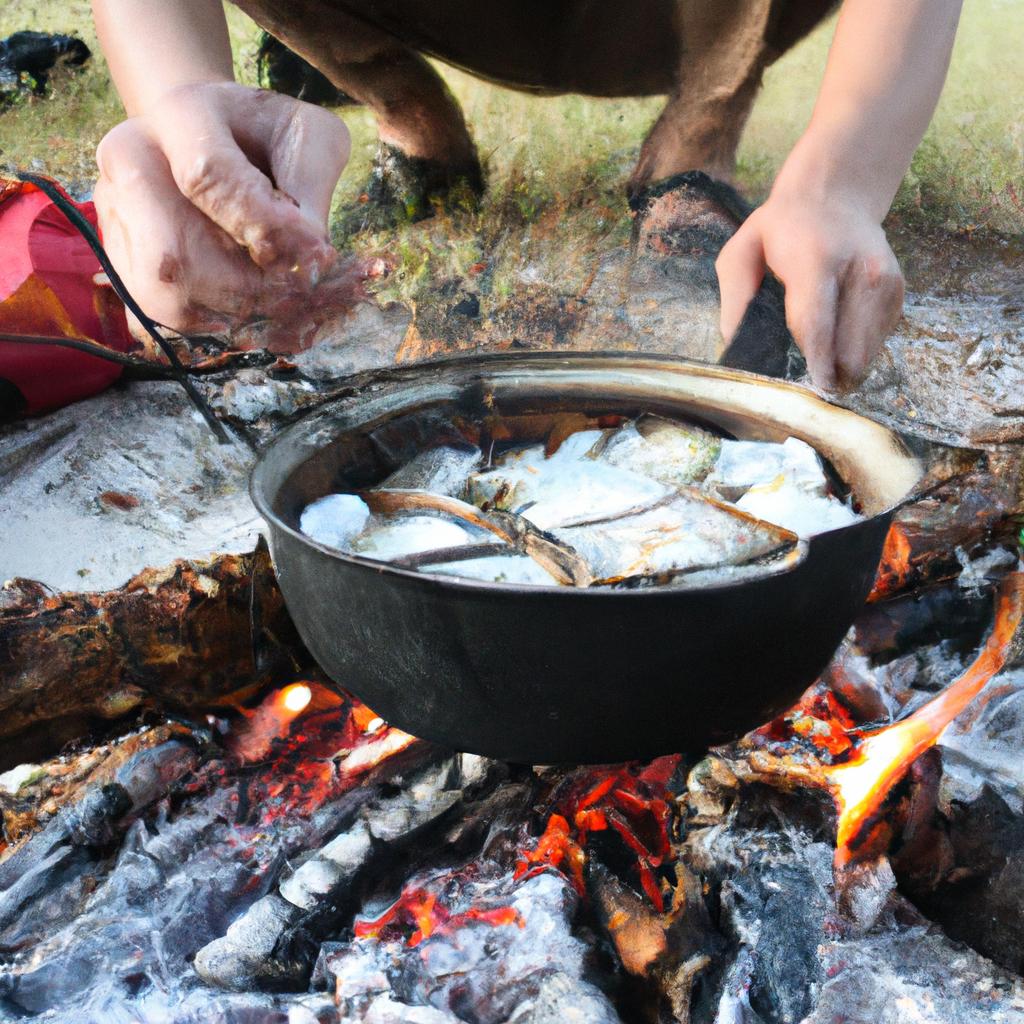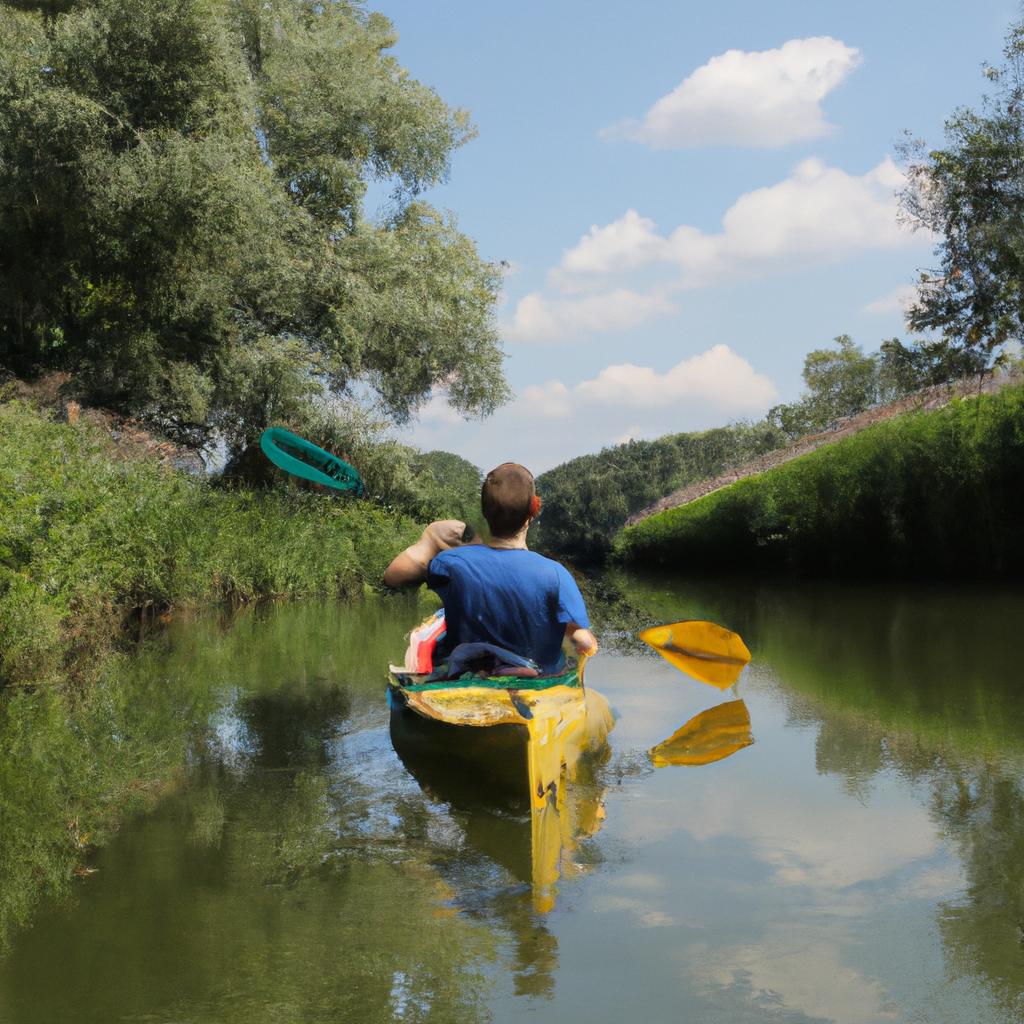Family vacations are a cherished tradition for many households, providing an opportunity to create lasting memories and strengthen familial bonds. However, the process of planning these getaways can be overwhelming, requiring careful consideration of various factors such as destination choices, budgeting strategies, and activities suitable for all family members. For instance, consider a hypothetical example where the Johnson family decides to embark on a cross-country road trip during their summer vacation. In order to ensure a successful and enjoyable experience, it is crucial to follow certain tips and guidelines that will assist in organizing fun-filled and memorable family vacations.
When it comes to planning Family Vacations, selecting the right destination plays a pivotal role in ensuring an engaging and enjoyable experience for everyone involved. Careful research must be conducted to identify destinations that cater to the interests and preferences of each family member. Additionally, considering factors such as accessibility, safety measures, and accommodation options are essential in making informed decisions about potential locations. By doing so, families can avoid unexpected obstacles or disappointments during their trips.
In addition to choosing an appropriate destination, creating a well-defined budget is imperative when planning any type of vacation. Budgeting allows families to allocate funds wisely while ensuring that necessary expenses are covered without overspending. Determining costs associated with transportation, accommodation, meals, activities, and any other potential expenses is crucial for an accurate budget. Researching and comparing prices for various options such as flights, hotels, rental cars, or campgrounds can help families make informed decisions that align with their financial capabilities.
Moreover, involving all family members in the planning process can contribute to a more enjoyable vacation experience. By allowing each individual to have a say in choosing activities or destinations, everyone’s interests can be taken into account. This not only ensures that everyone feels included and valued but also increases the likelihood of finding activities that cater to different age groups and preferences within the family.
When it comes to packing for a family vacation, being prepared is key. Creating checklists and organizing essentials such as clothing, toiletries, medications, entertainment items (books, games), travel documents (passports, IDs), and any necessary equipment (cameras, chargers) ahead of time can help minimize stress and ensure that nothing important is left behind.
During the actual trip itself, flexibility is crucial. Unexpected situations may arise that require adjustments to the itinerary or plans. Maintaining an open mind and adapting to changing circumstances will allow families to make the most of their vacations without unnecessary frustrations.
Lastly, prioritizing quality time together as a family is paramount during family vacations. While it’s important to plan activities that cater to individual interests and preferences within the family unit, carving out dedicated moments for shared experiences strengthens familial bonds and creates lasting memories. Whether it’s exploring new places together or engaging in fun group activities like hiking or playing board games in the evening, these shared moments are what truly make family vacations special.
In summary:
- Choose an appropriate destination by considering interests and preferences.
- Create a well-defined budget by researching costs associated with transportation,
accommodation, meals, etc. - Involve all family members in the planning process.
- Be prepared when packing by creating checklists and organizing essentials.
- Stay flexible during the trip to adapt to unexpected situations.
- Prioritize quality time together as a family for shared experiences and lasting memories.
Choosing the Perfect Destination
When planning a family vacation, one of the most crucial decisions is selecting the perfect destination. The right choice can make all the difference in creating an enjoyable and memorable experience for everyone involved. To illustrate this point, let’s consider a hypothetical case study of the Johnson family.
The Johnsons have two young children who love animals and adventure. They are looking to plan a vacation that will cater to their children’s interests while also providing opportunities for relaxation and quality family time. After careful consideration, they decide on visiting Costa Rica—a country known for its diverse wildlife, stunning natural landscapes, and exciting outdoor activities.
To assist you in choosing your own perfect destination, here are four factors to keep in mind:
-
Interests: Consider what activities or experiences would bring joy to every member of your family. Whether it’s exploring historical sites, enjoying water sports, or immersing yourselves in nature, finding a destination that aligns with your collective passions ensures maximum enjoyment for all.
-
Accessibility: Evaluate how easily you can reach your chosen destination. Take into account travel distances, available transportation options (such as flights or road trips), and any specific requirements like visas or vaccinations. Opting for a location within reasonable reach minimizes travel stress and allows more time for actual vacationing.
-
Safety: Prioritize safety when making your decision by researching crime rates, political stability, healthcare facilities, and emergency services at potential destinations. Ensuring a secure environment contributes significantly to peace of mind during your trip.
-
Budget: Your budget is another essential factor to consider since it determines key aspects such as accommodation choices, dining options, and additional activities available during your stay. Be realistic about what you can afford without compromising on quality or missing out on must-see attractions.
Consider this three-column table showcasing some popular family-friendly destinations around the world:
| Destination | Activities | Highlights |
|---|---|---|
| Costa Rica | Wildlife viewing, zip-lining, beach activities | Explore rainforests, spot monkeys and sloths, experience volcano tours |
| Orlando, USA | Theme parks (Disney World, Universal Studios), water parks | Meet beloved Disney characters, enjoy thrilling rides and shows |
| Barcelona, Spain | Beaches, historical sites (La Sagrada Familia), amusement park (Tibidabo) | Marvel at the architecture of Gaudi, sunbathe on Mediterranean beaches |
| Tokyo, Japan | Disneyland/DisneySea, cultural experiences (Shibuya Crossing), aquariums & zoos | Delight in Japanese culture and cuisine while exploring futuristic cityscapes |
By considering these factors and examples like the Johnson family’s choice of Costa Rica for their wildlife-loving children, you can make a well-informed decision when selecting your ideal vacation destination.
Setting a Budget
Section H2: Setting a Budget
Once you have settled on the perfect destination for your family vacation, it is crucial to set a realistic budget. This will ensure that you can enjoy your getaway without any unnecessary financial stress. Let’s consider an example of a family planning a trip to Orlando, Florida.
To begin with, it is important to outline all potential expenses associated with your vacation. These may include transportation costs, such as flights or gas money if traveling by car. Additionally, accommodation expenses should be taken into account, along with meals and entertainment activities. By creating a comprehensive list of possible expenditures, you can better estimate the overall cost of your trip.
Here are some key tips to help you effectively manage your budget:
- Prioritize Your Expenses: Determine which aspects of your vacation are most important to you and allocate funds accordingly. Consider what experiences or attractions are must-do items on your itinerary.
- Research Discounts and Deals: Take advantage of discounts and promotions offered by airlines, hotels, and tourist sites. Many establishments provide special rates for families or offer package deals that bundle multiple attractions together.
- Plan Meals Wisely: Eating out every meal can quickly add up in terms of cost. Look for accommodations that offer kitchenettes or book lodging where breakfast is included. Packing snacks and picnic lunches can further reduce dining expenses.
- Set Aside Emergency Funds: Even the best-planned vacations often encounter unexpected circumstances. It is wise to have a small emergency fund available in case of unforeseen events like medical emergencies or last-minute changes in plans.
Consider the following table showcasing how these strategies were implemented by our hypothetical family during their Orlando adventure:
| Expense Category | Planned Budget ($) | Actual Cost ($) | Difference ($) |
|---|---|---|---|
| Transportation | 800 | 750 | -50 |
| Accommodation | 1500 | 1400 | -100 |
| Meals | 600 | 550 | -50 |
| Entertainment | 400 | 400 | 0 |
As seen in the table, this family was able to stick closely to their planned budget for each expense category. By efficiently managing their funds and utilizing cost-saving strategies, they were able to enjoy their vacation without overspending.
In light of setting a realistic budget for your family trip, it is essential to research accommodation options that fit within your financial constraints. The next section will delve into various methods you can employ when searching for suitable places to stay during your getaway. So let’s move on and explore “Researching Accommodation Options” as we continue planning an unforgettable family vacation.
Researching Accommodation Options
Transitioning smoothly from the previous section on setting a budget, it is now important to delve into researching accommodation options for your family vacation. Let’s consider a hypothetical example of a family planning a trip to a popular beach destination during peak season.
When looking for suitable accommodations, there are several factors to keep in mind. Firstly, determine what type of lodging best suits your needs and preferences. Options may include hotels, resorts, vacation rentals, or even camping grounds. For our hypothetical family, they might choose between staying at a beachfront resort with all-inclusive amenities or renting a private beach house that offers more space and privacy.
Once you have identified the types of accommodations that suit your requirements, it is crucial to conduct thorough research before making any reservations. Consider the following tips:
- Read reviews: Look for feedback from previous guests to gain insights into their experiences.
- Check location: Ensure that the chosen accommodation is conveniently located near attractions and amenities you plan to visit.
- Compare prices: Explore different websites or platforms to find competitive rates and potential discounts.
- Contact directly: Reach out to the establishment via phone or email to inquire about any specific concerns or special requests.
To illustrate further, here is an emotional bullet point list highlighting how careful research can enhance your overall experience:
- Feeling reassured knowing you have made an informed decision
- Avoiding unpleasant surprises upon arrival
- Creating cherished memories by selecting accommodations tailored to your family’s preferences
- Maximizing value for your money through careful comparison
In addition to conducting diligent research, utilizing a table format can help organize information effectively. Here’s an example comparing two accommodation options based on key features and pricing:
| Accommodation Option | Features | Pricing (per night) |
|---|---|---|
| Beachfront Resort | On-site pool | $200 |
| Complimentary breakfast | ||
| Kids club | ||
| Direct beach access | ||
| Private Beach House | Ocean view | $250 |
| Full kitchen | ||
| Multiple bedrooms | ||
| Private outdoor space |
In conclusion, researching accommodation options is a vital step in planning your family vacation. By considering various factors and conducting thorough research, you can make an informed decision that best suits your needs and preferences.
Planning Activities for All Ages
Section H2: Planning Activities for All Ages
Transitioning from researching accommodation options, it is crucial to plan activities that cater to all ages and interests of your family members. To illustrate this point, let’s consider a hypothetical case study of the Johnson family who are planning a vacation. The Johnsons consist of parents in their early 40s and two children aged 8 and 12. While the parents enjoy outdoor adventures and cultural experiences, the kids prefer amusement parks and water sports. By carefully selecting activities that meet everyone’s preferences, the Johnsons can ensure an enjoyable vacation for each family member.
To create a well-rounded itinerary that caters to various age groups, here are some key considerations:
-
Variety: Include a mix of activities that appeal to different interests within your family. For instance, if one parent enjoys history while another prefers outdoor pursuits, you could visit historical sites during the day and engage in hiking or biking excursions later on.
-
Flexibility: Plan for downtime between activities to allow relaxation and spontaneous exploration. This flexibility will prevent over-scheduling and provide opportunities for unexpected discoveries along the way.
-
Child-friendly options: Ensure there are attractions specifically designed for younger visitors at your chosen destination(s). Look for theme parks, interactive museums, playgrounds, or kid-oriented tours that will keep them engaged throughout the trip.
-
Group activities: Consider including experiences that encourage bonding among family members such as cooking classes or team-building challenges like escape rooms. These shared moments not only foster stronger connections but also create lasting memories.
| Activity Type | Parent-Friendly Options | Kid-Friendly Options |
|---|---|---|
| Outdoor | Hiking in national parks | Water sports at beach resorts |
| Cultural | Visiting art galleries | Interactive science museums |
| Entertainment | Attending theater shows | Theme park rides |
| Relaxation | Spa treatments | Playing at water parks |
By planning activities that cater to various interests and ages, the Johnson family can maximize their vacation enjoyment. As they explore outdoor excursions, immerse themselves in cultural experiences, engage in entertaining activities, and find moments of relaxation, each family member will have a chance to create cherished memories.
With activity planning underway, it is crucial to consider what essentials should be packed for a stress-free trip.
Packing Essentials for a Stress-Free Trip
Section Title: Planning Activities for All Ages
Building on the importance of catering to different age groups, let’s explore how planning diverse activities can enhance your family vacation experience. For instance, imagine a family with three generations traveling together – grandparents, parents, and children. To ensure everyone has an enjoyable time, it is crucial to consider activities that cater to each individual’s interests and abilities.
Paragraph 1:
To create a memorable vacation for all ages, here are some key considerations:
- Variety of Options: Provide a range of activity options that appeal to different age groups. This could include outdoor adventures like hiking or cycling trails suitable for adults while also offering kid-friendly attractions such as theme parks or interactive museums.
- Flexibility in Scheduling: Allow enough flexibility in your itinerary so that you can accommodate various preferences and energy levels. Balancing structured activities with free time will enable everyone to recharge and engage in their preferred pursuits.
- Collaborative Decision-Making: Involve every family member in the decision-making process by allowing them to contribute ideas and suggestions based on their interests. Encouraging participation fosters a sense of ownership and ensures everyone feels included.
- Embrace Multi-generational Experiences: Seek out opportunities for intergenerational bonding through shared experiences like cooking classes, guided tours, or attending local cultural events. These activities not only bring the whole family closer but also provide valuable learning opportunities.
Bullet Point List (evoking emotional response):
Planning activities tailored to each generation brings families closer through:
- Creating lasting memories
- Fostering stronger relationships
- Promoting understanding between different age groups
- Nurturing mutual respect and appreciation
Paragraph 2:
By incorporating these strategies into your vacation planning process, you lay the foundation for an unforgettable trip where cherished moments are created across generations. Below is a table highlighting potential activity suggestions for each age group:
| Age Group | Activity Suggestions |
|---|---|
| Children | Amusement parks, interactive museums, nature walks |
| Parents | Outdoor adventures like hiking or cycling trails, city tours |
| Grandparents | Guided historical tours, leisurely sightseeing, cultural events |
Table (evoking emotional response):
Engaging Activities for All Ages:
| Age Group | Activity Suggestions |
|---|---|
| Children | Amusement parks |
| Interactive museums | |
| Nature walks | |
| Parents | Hiking or cycling trails |
| City tours | |
| Grandparents | Guided historical tours |
| Leisurely sightseeing | |
| Cultural events |
Paragraph 3:
By thoughtfully planning activities that cater to each age group’s preferences and abilities, you can ensure a harmonious family vacation. In the subsequent section about “Creating a Flexible Itinerary,” we will explore how incorporating flexibility into your plans can further enhance your trip by allowing room for spontaneity and unexpected discoveries.
With these considerations in mind, let’s now delve into creating a flexible itinerary that allows for memorable moments of exploration and adventure.
Creating a Flexible Itinerary
Having discussed the importance of packing essentials, let us now move on to the next crucial aspect of planning a family vacation – creating a flexible itinerary. To illustrate the significance of this step, consider the following example:
Example: Imagine you are traveling with your family to a popular tourist destination. You have meticulously packed all the necessary items and are excited to explore various attractions. However, upon arriving at your destination, you realize that some places require advanced reservations or have limited availability. Without a well-planned itinerary in place, you may miss out on these experiences or waste valuable time waiting in long lines.
Paragraph 1:
To ensure an enjoyable and stress-free trip, it is essential to create a flexible itinerary that allows room for spontaneity while ensuring key activities are included. A detailed itinerary helps maximize your time by providing structure and guidance during the vacation. Here are some tips to help you craft an effective itinerary:
- Research and prioritize attractions: Before finalizing your itinerary, research different attractions and activities available at your chosen destination. Make a list of must-see places based on your family’s interests and preferences.
- Allocate sufficient time: Consider how much time each activity will take and allocate adequate time slots accordingly. It’s important not to cram too many activities into one day as this can lead to exhaustion and disappointment.
- Leave space for relaxation: While it’s tempting to fill every minute with exciting adventures, remember that vacations should also be about relaxation and rejuvenation. Factor in downtime where your family can unwind and enjoy leisurely moments together.
- Be adaptable: Despite thorough planning, unexpected circumstances may arise during your trip. Keep alternative options handy so that if any attraction is closed or becomes overcrowded, you can easily switch gears without feeling overwhelmed.
Paragraph 2 (Bullet Point List):
Creating a Flexible Itinerary – Tips:
- Prioritize attractions based on interests and preferences
- Allocate sufficient time for each activity
- Allow space for relaxation and downtime
- Be adaptable to unexpected changes or closures
Paragraph 3 (Table):
| Day | Morning | Afternoon | Evening |
|---|---|---|---|
| Monday | Visit Museum A | Explore Park B | Dinner at Local Restaurant |
| Tuesday | Hiking in Mountain X | Picnic by the Lake | Movie Night |
| Wednesday | Museum C Tour | Shopping at Mall Y | Family Game Night |
By following these tips, you can create a flexible itinerary that ensures you make the most of your family vacation.
Making Reservations in Advance
Having discussed the importance of creating a flexible itinerary for your family vacation, let us now explore another crucial aspect of planning – making reservations in advance.
Section:
When it comes to planning a family vacation, making reservations ahead of time can save you from unnecessary stress and ensure that everything runs smoothly. Let’s consider an example to illustrate this point: Imagine you are taking your family on a beach vacation during the peak summer season. Without prior reservations, you may find yourself struggling to secure accommodations close to the shore or facing long wait times at popular restaurants. However, by making reservations in advance, you can guarantee prime locations and avoid disappointment.
To further emphasize the benefits of making advance bookings, here are some key reasons why it is essential:
- Peace of mind: By securing reservations early on, you can eliminate any anxiety about availability and focus on enjoying quality time with your loved ones.
- Better deals: Many hotels and resorts offer discounted rates when booking in advance. Taking advantage of these promotions can help stretch your budget and allow for additional activities during your trip.
- Increased options: Whether you’re looking for specific room configurations or seeking out unique experiences like guided tours or special events, reserving in advance gives you a wider range of choices.
- Time management: Pre-planned reservations enable efficient scheduling, allowing you to make the most of each day without wasting precious moments trying to find available slots spontaneously.
To provide a visual representation of how beneficial early reservations can be for families embarking on vacations, take a look at the following table:
| Benefits | Description |
|---|---|
| Convenience | Eliminates last-minute scrambling for accommodation and dining options. |
| Cost savings | Enables access to promotional offers and discounts. |
| Variety | Provides more choices regarding amenities and location preferences. |
| Efficient planning | Facilitates better time management throughout the trip. |
By considering the example and understanding the advantages listed above, it becomes clear that making reservations in advance is a crucial step in planning a successful family vacation.
With reservations made well ahead of time, the next important aspect to consider when preparing for your family getaway is checking for family-friendly amenities at your chosen destination.
Checking for Family-Friendly Amenities
When planning a family vacation, it is essential to consider the amenities offered by your chosen accommodation. Family-Friendly Amenities can greatly enhance your trip and ensure that everyone has an enjoyable time. Let’s take a look at some key aspects to consider when checking for family-friendly amenities.
For instance, imagine you are planning a beach vacation with your young children. One crucial amenity to look for would be the presence of a pool area specifically designed for kids. This could include features such as shallow areas, water slides, or splash pads. Having access to these types of facilities will not only provide endless hours of entertainment but also allow your little ones to cool off safely under supervision.
To make the search easier for you, here is a list of important family-friendly amenities worth considering:
- On-site playgrounds or recreational areas
- Kids’ clubs offering supervised activities and games
- Childcare services or babysitting options
- Family-oriented dining options or kid-friendly menus
Additionally, accommodations often offer various forms of entertainment suitable for families. Here’s an example table showcasing different types of amenities that may evoke excitement in both parents and children:
| Amenity | Description | Benefit |
|---|---|---|
| Adventure park | Zip lines, climbing walls, and obstacle courses | Thrilling outdoor experiences |
| Arcade room | Video games and classic arcade machines | Fun-filled indoor activity |
| Movie theater | In-house cinema screening popular films | Enjoying movies together on cozy evenings |
| Mini-golf course | Miniature golf with themed obstacles | Competitive yet entertaining rounds for the whole family |
By carefully selecting accommodations with these types of amenities available, you can create unforgettable memories while ensuring every member of your family has something exciting to enjoy during their vacation.
Next Up: Ensuring Safety and Security – Safeguarding Your Family During Travel
Ensuring Safety and Security
With family-friendly amenities checked off the list, it is crucial to prioritize safety and security during your family vacation. By taking necessary precautions and being aware of potential risks, you can ensure a worry-free and enjoyable getaway for everyone.
Case Study:
Imagine this scenario: You have planned a beach vacation with your spouse and two young children. As you arrive at your rented beach house, you notice that there are no childproof locks on the doors or windows. Concerned about the safety of your curious toddlers, you quickly realize the importance of ensuring a secure environment for your family.
To help you create a safe and secure atmosphere during your family vacation, consider implementing the following measures:
- Research Your Destination: Before embarking on any trip, conduct thorough research about your destination’s safety record. Check travel advisories issued by reliable sources such as government agencies or reputable travel websites.
- Choose Accommodations Wisely: When selecting accommodations, opt for places that prioritize guest safety. Look for features like 24-hour security, well-lit parking areas, surveillance cameras, and sturdy door locks.
- Stay Vigilant in Public Spaces: Whether exploring tourist attractions or simply strolling through local neighborhoods, always be mindful of your surroundings. Keep an eye on your valuables and teach children about personal space boundaries.
- Plan Emergency Procedures: Discuss emergency procedures with every member of the family before departing for your vacation. Establish meeting points in case someone gets separated from the group and familiarize yourself with local emergency services.
| Safety Measures | Importance Level |
|---|---|
| Thoroughly researching destinations | High |
| Choosing secure accommodations | High |
| Staying vigilant in public spaces | Medium |
| Planning emergency procedures | Medium |
By incorporating these safety measures into your planning process, you can relax knowing that you have taken steps to protect your family’s well-being during your vacation.
Now that we have covered the importance of ensuring safety and security, let us explore ways to keep everyone entertained during travel.
Keeping Everyone Entertained During Travel
As we prioritize the safety and security of our family vacations, it is also important to consider how we can keep everyone entertained during travel. By planning ahead and incorporating various activities into the journey, you can ensure that your family stays engaged and excited throughout the trip.
Example: Let’s take a hypothetical scenario where a family is embarking on a road trip from their home in San Francisco to Yosemite National Park. The journey will take approximately four hours, so it’s crucial to have strategies in place to prevent boredom and restlessness among family members.
To make the travel time enjoyable for everyone involved, here are some tips:
- Create an engaging playlist: Curate a selection of songs that appeal to different age groups within your family. This way, everyone can enjoy sing-alongs or simply listen to their favorite tunes.
- Pack activity bags: Prepare individualized activity bags for each member of the family. Fill them with coloring books, puzzles, reading materials, or handheld gaming devices – tailored according to personal preferences.
- Play interactive games: Utilize classic car games such as “I Spy,” “20 Questions,” or license plate scavenger hunts. These simple yet entertaining activities encourage interaction and create lasting memories.
- Take breaks at interesting locations: Plan stops at scenic spots or attractions along the way. Stretching legs while exploring new places adds excitement to the journey and breaks up the monotony of long drives.
| Activity Bags | Interactive Games | Scenic Stops |
|---|---|---|
| Coloring Books | I Spy | Scenic Spots |
| Puzzles | 20 Questions | Attractions |
| Reading Material | License Plate Scavenger Hunt | |
| Handheld Gaming Devices |
By implementing these suggestions during your travels, you’ll find that even long trips can be filled with joy and engagement for every member of your family.
As we aim to create unforgettable memories during our family vacations, capturing and preserving these moments becomes paramount. The next section will explore various methods for documenting your experiences, allowing you to relive them in the years to come.
Capturing and Preserving Memories
Transitioning from the previous section H2 on keeping everyone entertained during travel, it is crucial to focus on capturing and preserving memories during your family vacation. One way to achieve this is by documenting your experiences through various means such as photographs, videos, or journal entries. For instance, imagine a family embarking on an exciting road trip across different states in the United States. Throughout their journey, they capture stunning landscapes, laughter-filled moments at roadside attractions, and heartwarming interactions with locals.
To ensure you can cherish these precious memories for years to come, consider the following tips:
-
Create a visual diary: Take advantage of modern technology and use smartphones or digital cameras to take high-quality photos. Encourage each family member to contribute by taking turns as designated photographers.
-
Record videos: Capture special moments by recording short videos that showcase your adventures. These videos will allow you to relive the sounds, sights, and emotions experienced during your trip.
-
Maintain a travel journal: Encourage family members to write about their daily experiences in a shared travel journal. This activity not only serves as a creative outlet but also provides an opportunity for reflection and personal growth.
-
Collect mementos: Gather small tokens or souvenirs along the way that represent significant places or events during your vacation. These items can serve as tangible reminders of memorable experiences when displayed at home.
Consider utilizing the table below as a guide for documenting your memories effectively:
| Type of Memory | Method |
|---|---|
| Photographs | Digital camera/smartphone |
| Videos | Camcorder/smartphone |
| Journal Entries | Shared travel diary/writing apps |
| Mementos | Tokens/souvenirs |
By actively capturing and preserving memories throughout your family vacation using photography, video recordings, journal entries, and collecting meaningful mementos, you will create a treasure trove of shared experiences. These memories can be revisited in the future, allowing you and your loved ones to relive the joy and emotions associated with each adventure.
Transitioning into the subsequent section on reflecting on the trip and planning for future vacations, it is important to take time to reflect upon what made this particular vacation memorable before looking ahead to new adventures.
Reflecting on the Trip and Planning for the Next One
Having captured precious memories of your family vacation, it is now time to reflect on the trip and start planning for future getaways. By taking a moment to evaluate your experience and make necessary adjustments, you can ensure that each subsequent vacation becomes even more enjoyable and memorable.
Reflecting on past trips allows families to learn from their experiences and improve their future vacations. For example, let’s consider a hypothetical case study where a family recently went on a beach vacation but encountered unexpected challenges due to overcrowded beaches and lack of activities suitable for children. Based on this experience, here are some valuable insights they could gain:
- Engage in thorough research before choosing a destination: Understanding the suitability of a location for all family members’ interests and preferences can help avoid potential disappointments.
- Consider off-peak travel times: Opting for less popular travel periods can minimize crowds and allow for a more relaxed vacation experience.
- Seek recommendations from other families or online communities: Gathering insights from others who have visited certain destinations can provide valuable tips and suggestions.
- Plan age-appropriate activities in advance: Ensuring there are ample activities tailored to different age groups within the family will keep everyone engaged throughout the trip.
To facilitate better organization when reflecting on past vacations or planning new ones, utilizing tables can be helpful. Here is an example table showcasing different aspects that families may want to assess:
| Aspect | Observations | Areas of Improvement |
|---|---|---|
| Accommodation | Comfortable but noisy | Look for quieter options |
| Dining | Varied choices with limited child-friendly options | Research restaurants catering specifically to children |
| Transportation | Efficient transportation system | Explore alternative modes of transport |
This table format enables families to objectively analyze various components of their trip while identifying areas that require improvement or adjustments for future vacations.
In summary, reflecting on past family vacations and using the insights gained to plan upcoming getaways is crucial for creating memorable experiences. By conducting thorough research, considering off-peak travel times, seeking recommendations from others, and planning age-appropriate activities in advance, families can enhance their vacation experience. Utilizing tables enables better organization and assists in identifying areas of improvement. So go ahead and start planning your next adventure with confidence!
Note: The markdown formatting may not be visible as this response is provided in plain text format.











